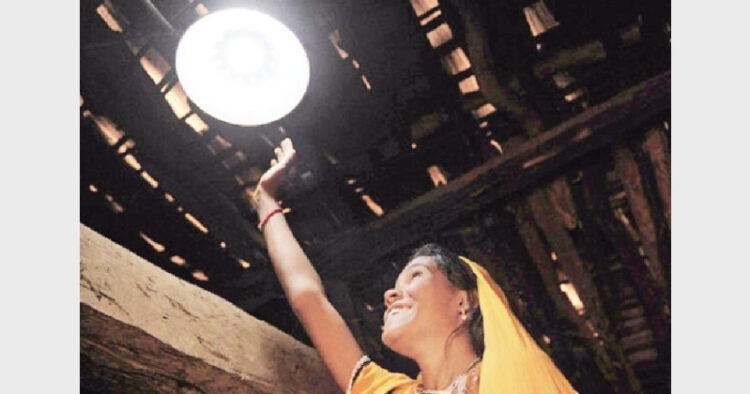 Rural electrification is an imperative as two third of our population still lives in the village. The statistics of the achievements shows our government is very much alive to this need
Rural electrification is an imperative as two third of our population still lives in the village. The statistics of the achievements shows our government is very much alive to this need
JP Dubey
While the world as a whole has crossed the half way mark in urbanisation way back in 2009, two third of India continues to live in villages. We are lagging behind and are afraid of the consequences of unplanned urbanisation of slums and all that comes with them. We would like to be urbanised in a well-planned manner. But we must also ensure that all our rural brethren have the wherewithal for a decent living. Electricity is one of the necessities of life now. Everyone should have access to it.
India has about six lakh inhabited villages. Only 20 per cent of these are having a population of 2000 or more. Although the number of small villages is declining, it is still quite significant. Many of these small villages are located in remote areas with difficult access. Providing all such villages with roads, internet and electricity can be a very costly and economically
infeasible exercise. It would be much better if we could consolidate villages, as people migrate to cities.
The definition of electrification can be challenging. For instance, an
electrified village, as defined after 1997 is one which has electricity line and transformer for the whole village including its Dalit Basti. All schools, clinics, dispensaries, panchayats bhawan should also be connected to the line. On top of it at least 10 per cent of the households in the village should also be connected to the line to classify it as an electrified one. We have 597464 census villages. By this
definition, 98.2 per cent of them have already been electrified.
Deen Dayal Upadhyaya Gram Jyoti Yojana (DDUGJY) was launched on November 20, 2014 in which the
erstwhile Rajiv Gandhi Grameen Vidyutikaran Yojana (RGGVY) has been merged. Total outlay for DDUGJY is Rs. 44,033 crore. Under this scheme, 921 projects have been sanctioned to electrify 1,21,225 unelectrified villages, intensive electrification of 5,92,979 partially electrified villages and to provide free electricity to 397.42 lakh rural BPL households. 1,17,648 unelectrified villages have been electrified by June, 2016. Intensive electrification has been carried out in 3,69,330 electrified villages. 240.82 lakh BPL families have been provided with free connections.
One valid argument can be about the definition of an electrified village. Can a village with just 10 per cent of its households connected to the line be justifiably be called an electrified village? People migrate to larger conglomerations where the number can support modern facilities. Thus would it be economically prudent and practical to consolidate our villages? We should prepare a blueprint for rural and urban development and develop each of them in a well-planned manner complete with all modern facilities and with all kinds of connectivity.
Rural electrification is important, undoubtedly. But we must have aim to provide clean, affordable power to all the families in every village, not just 10 per cent. For this, we must pursue renewable energy in a massive way. Our government is alive to this need and the importance of electrification. Hence we may look forward to realising such enhanced goals in foreseeable future.
(The writer is a Senior Columnist and having expertise on developmental issues)














Comments